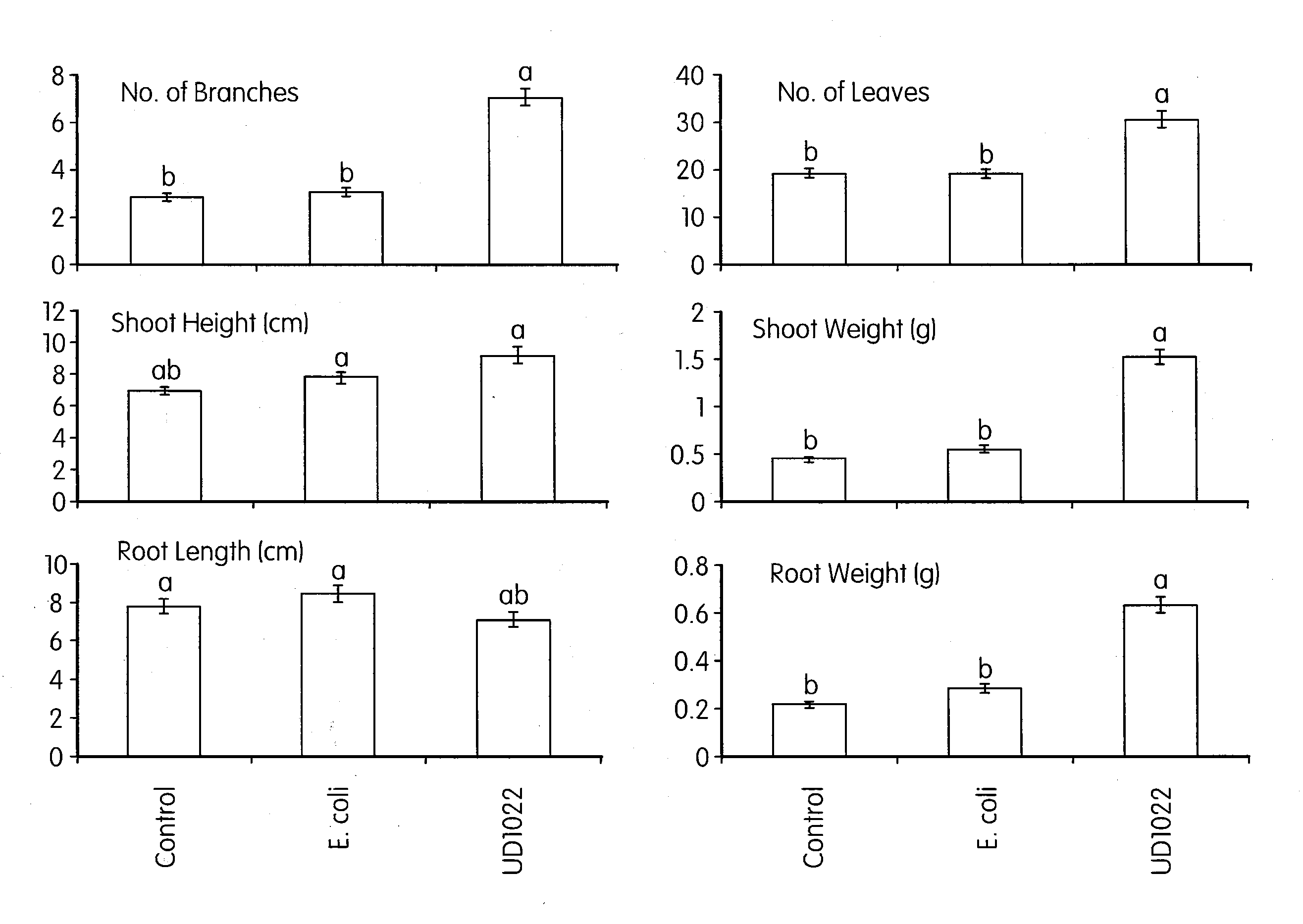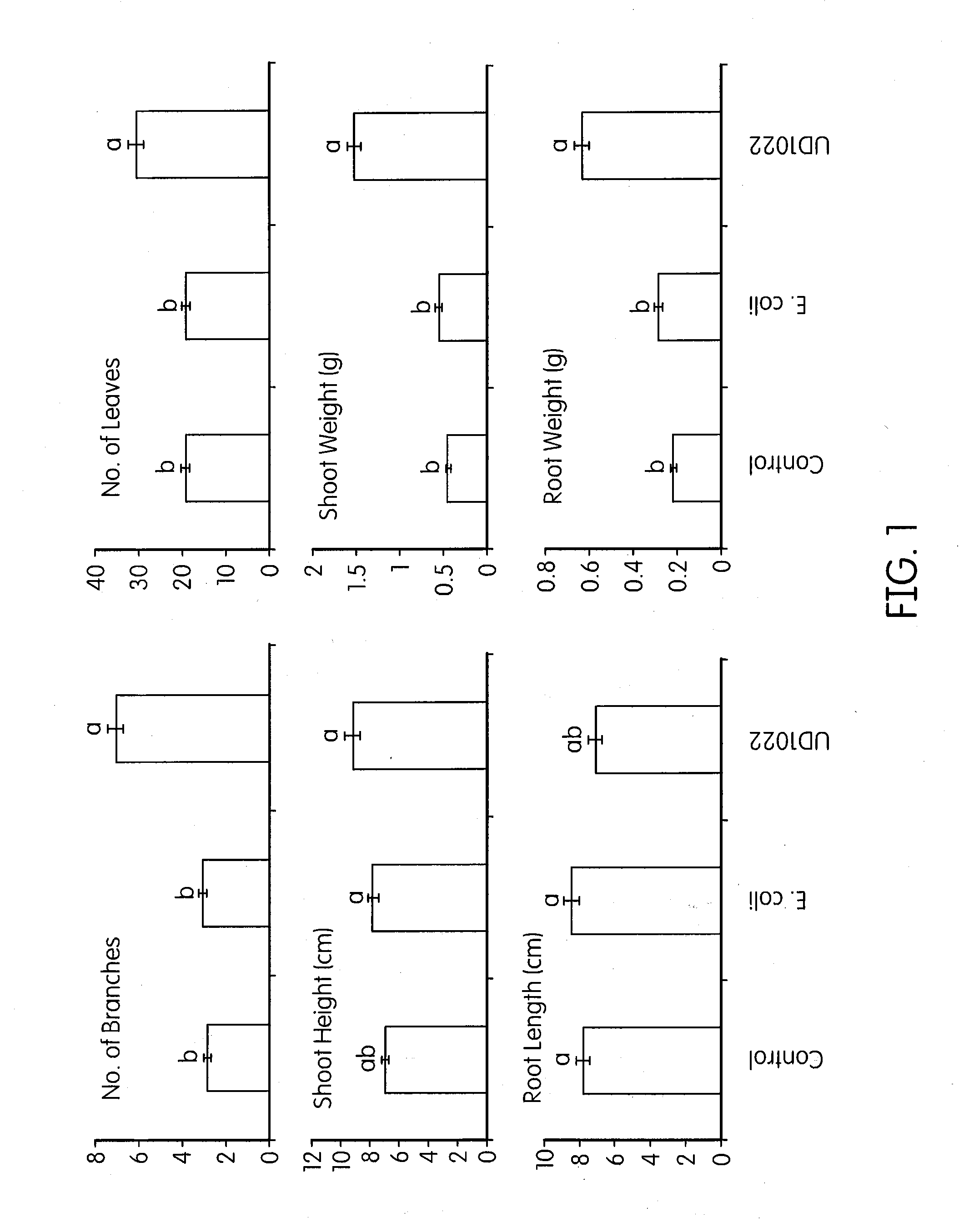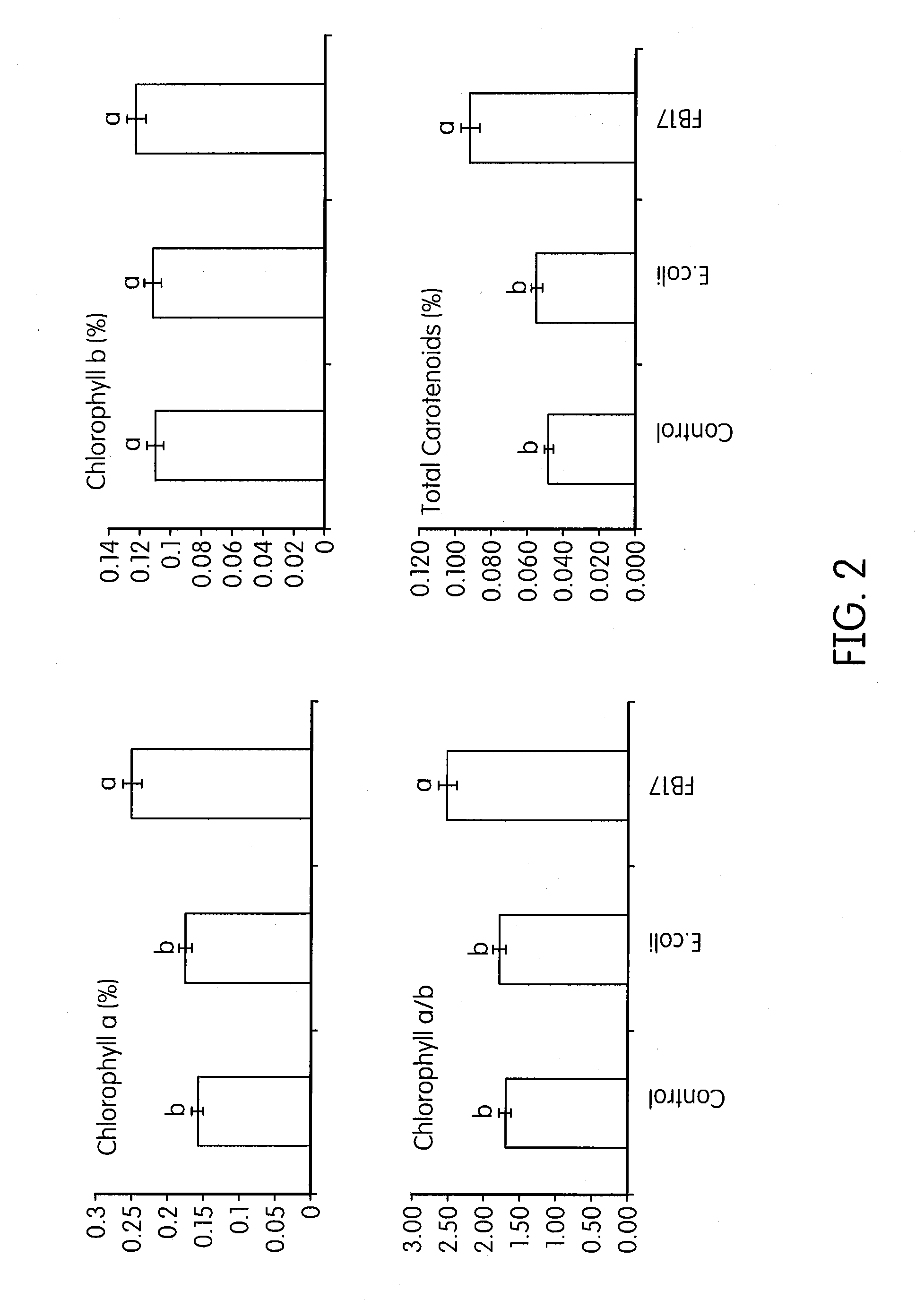Compositions and methods for increasing biomass, iron concentration, and tolerance to pathogens in plants
a technology of biomass and iron concentration, applied in the field of plant growth promoting rhizobacteria, can solve the problems of affecting the frequency and intensity of drought, severely restricting or even eliminating crop production, and limiting crop production globally, so as to inhibit the infection of plants and be used safely for humans
- Summary
- Abstract
- Description
- Claims
- Application Information
AI Technical Summary
Benefits of technology
Problems solved by technology
Method used
Image
Examples
example 1
[0061]Brachypodium distachyon and corn plants were germinated and grown for 21 days. Once in 5 days (3 times), 5 ml of 0.5 OD B. subtilis FB17 per pot was added. For control, 5 ml of 0.5 OD of E. coli OP50 per pot was added. FB17 and OP50 had been grown overnight in LB medium and optical density (OD) at wavelength (600 nm) was taken using SmartSpec (Bio Rad) spectrophotometer. Ten days after the final treatment, plants were analyzed. The controls described in all the experiments herein refer to plants that were not treated with bacteria or that were treated with E. coli OP50.
[0062]Brachypodium distachyon (Bd2-1) and corn plants treated with B. subtilis FB17, bacterial control E. coli, or mock treatment were grown in 4×4 inch pots in standard conditions (22-25° C., 60% humidity, 16 h light-8 h dark photoperiod) for 30 days post treatment. Aerial and root biomass of the energy crop B. distachyon increased with FB17 treatment. FIG. 1 shows that the biomass of B. distachyon treated with...
example 2
[0064]Arabidopsis thaliana seeds were germinated and grown for 21 days. Once in 5 days (3 times), 5 ml of 0.5 OD B. subtilis FB17 per pot was added. For control, 5 ml of 0.5 OD of E. coli OP50 per pot was added. FB17 and OP50 had been grown overnight in LB medium and optical density (OD) at wavelength (600 nm) was taken using SmartSpec (Bio Rad) spectrophotometer. Ten days after the final treatment, plants were subjected to drought (i.e., no water was added) at 25° C. with 40% humidity for 4 weeks. Thirty days post-treatment, drought was assessed through loss of stay green phenotype in the untreated plants compared to the FB17 treated plants, indicating that FB17 confers enhanced drought tolerance in Arabidopsis.
example 3
[0065]Seed treatment of B. subtilis FB17 promotes biomass enhancement in Corn Mo17, CML258, CML10, Zinnia, and Brachypodium distachyon.
[0066]To test the effect of B. subtilis FB17 on biomass enhancement in corn (Mo17, CML258, CML10), soybean (Will-82), tomato (Solanum lycopersicum), Zinnia, and Brachypodium distachyon (an energy crop model), 50 seeds (n=50) per plant species were seed treated with B. subtilis FB17 (about 1×107 cfu / seed or 12.5 ml / kg of 0.5 Optical Density (OD) Bacillus subtilis FB17 grown overnight in LB medium, at wavelength 600 nm as measured using a SmartSpec Bio Rad spectrophotometer). Post seed treatment seeds were individually sown in pots (4×4 inches) with a soil mix for germination and biomass studies. Interestingly, seed treatment of B. subtilis FB17 promoted root and shoot growth for all the tested crop species. Measurements were taken 15 days post treatment.
[0067]Seed treated plants promoted increased root biomass resulting in denser root systems rather ...
PUM
| Property | Measurement | Unit |
|---|---|---|
| OD | aaaaa | aaaaa |
| humidity | aaaaa | aaaaa |
| humidity | aaaaa | aaaaa |
Abstract
Description
Claims
Application Information
 Login to View More
Login to View More - R&D
- Intellectual Property
- Life Sciences
- Materials
- Tech Scout
- Unparalleled Data Quality
- Higher Quality Content
- 60% Fewer Hallucinations
Browse by: Latest US Patents, China's latest patents, Technical Efficacy Thesaurus, Application Domain, Technology Topic, Popular Technical Reports.
© 2025 PatSnap. All rights reserved.Legal|Privacy policy|Modern Slavery Act Transparency Statement|Sitemap|About US| Contact US: help@patsnap.com



